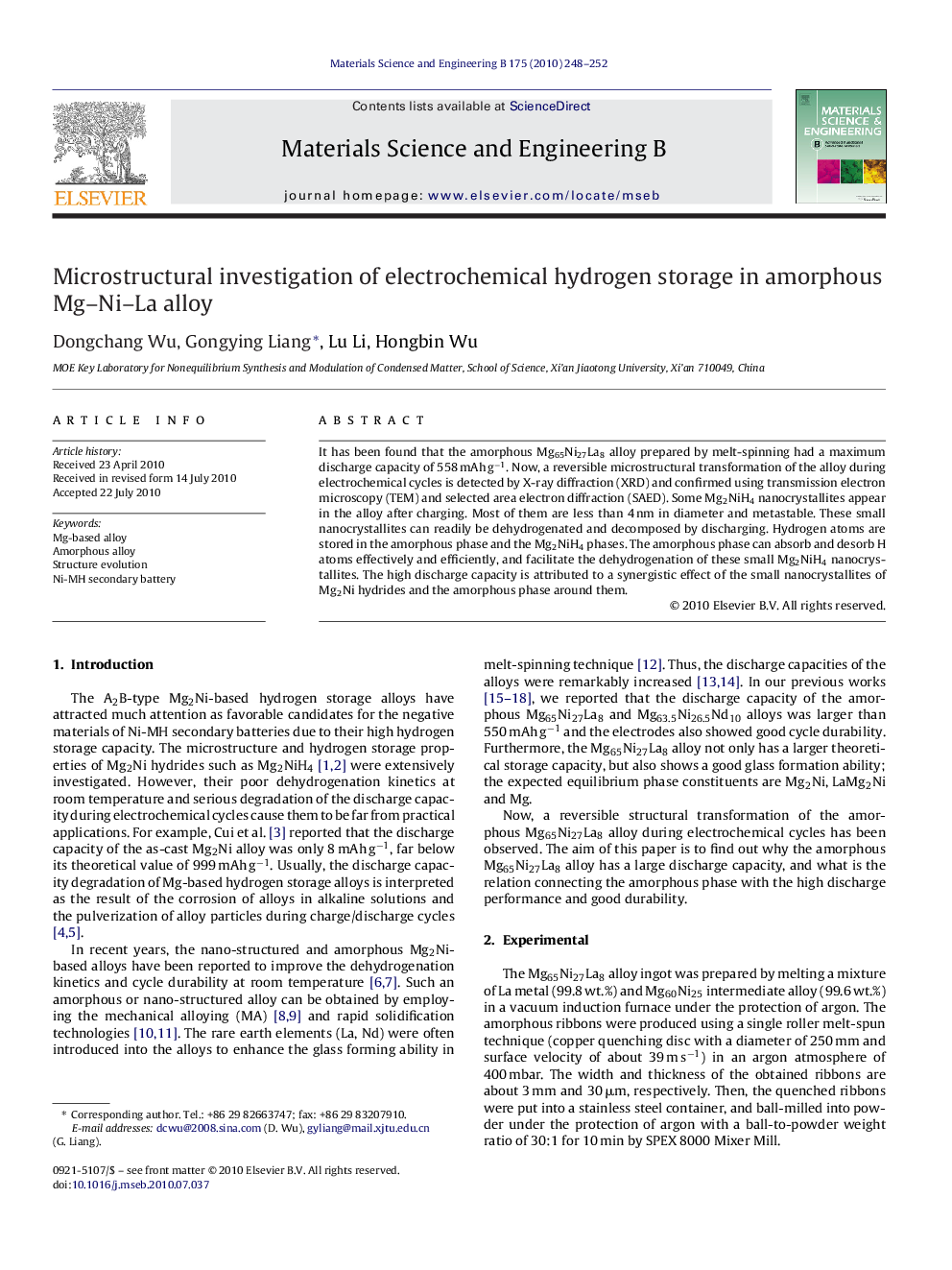| Article ID | Journal | Published Year | Pages | File Type |
|---|---|---|---|---|
| 1529942 | Materials Science and Engineering: B | 2010 | 5 Pages |
Abstract
It has been found that the amorphous Mg65Ni27La8 alloy prepared by melt-spinning had a maximum discharge capacity of 558 mAh gâ1. Now, a reversible microstructural transformation of the alloy during electrochemical cycles is detected by X-ray diffraction (XRD) and confirmed using transmission electron microscopy (TEM) and selected area electron diffraction (SAED). Some Mg2NiH4 nanocrystallites appear in the alloy after charging. Most of them are less than 4 nm in diameter and metastable. These small nanocrystallites can readily be dehydrogenated and decomposed by discharging. Hydrogen atoms are stored in the amorphous phase and the Mg2NiH4 phases. The amorphous phase can absorb and desorb H atoms effectively and efficiently, and facilitate the dehydrogenation of these small Mg2NiH4 nanocrystallites. The high discharge capacity is attributed to a synergistic effect of the small nanocrystallites of Mg2Ni hydrides and the amorphous phase around them.
Related Topics
Physical Sciences and Engineering
Materials Science
Electronic, Optical and Magnetic Materials
Authors
Dongchang Wu, Gongying Liang, Lu Li, Hongbin Wu,
